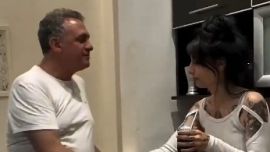“Last week we agreed not to cover the World Trade Organisation (WTO) summit while still in progress so what else should we be discussing if we exclude current issues? At this late stage of the year looking ahead obviously suggests itself but I’m not keen on limiting that to a preview of 2018 because I think that properly belongs to the start of that year or the very last week of the old. So let’s try some ‘2020 vision’ and then some. More than what the new year will bring, I’d like to know if the positive trends now in evidence have legs for the next several years or if by 2025 or by a possible 2030 River Plate World Cup we’ll be forced to conclude that the endless cycles of the Argentine economy are continuing indefinitely.”
My reply:
“In some ways this question is unique to Argentina after so many decades of stagnation and inflation, and also because of the local mentality of systematic scepticism and chronic pessimism which a sustained take-off would need to overcome but in many ways the problem is familiar enough worldwide – the famous middle-income trap whereby the per capita income range of US$10,000-15,000 has become a permanent plateau for so many countries. The most frequent path to that plateau is export growth helping incomes to rise to that level which then makes the economy less competitive – there is something of that in Argentina’s case but it is far from the full story.
“For a start per capita income is not the full story since there are wildly differing patterns of distribution – some countries are more equal than others, as George Orwell might say. The trends in income distribution conspire against economic development. Around the year 1975 when personal income was famously half the economy, 70 percent of Argentina was middle-class – today 45 percent at best (including such deprived sectors as schoolteachers) would describe themselves as middle-class. Even in the first decade of democracy only a single-digit percentage lay below the poverty line and there was full employment – indeed so much so that there were roughly four jobs for every three workers with loads of moonlighting. In the next decade unemployment soared close to 20 percent in a context of partial modernisation and significant productivity gains but in this millennium joblessness has so far been kept within single digits thanks to populist governments subordinating productivity to full employment policies but they have been far less successful against a poverty stubbornly around the 30-percent mark. And all this in the context of more or less the same per capita income decade after decade.
“Everybody talks about that 30-percent poverty (one of President Mauricio Macri’s three top priorities) but the income distribution within the other 70 percent also deserves attention. Fortunately a pie chart by Guillermo Oliveto’s ‘W’ consultancy recently given extensive media coverage has emerged for that purpose, breaking down Argentina’s 42 million people and 12 million households into five socio-economic sectors.
That pyramid is topped by an ABC1 upper class of five percent of households (or 1.2 million people) enjoying mostly three-digit monthly incomes. Then comes the middle class of 45 percent (over 15 million people) divided into two sectors – C2 numbers 17 percent aspiring to a genuinely bourgeois lifestyle at an average monthly income of 55,000 pesos but the other 28 percent slide into a C3 lower middle class averaging barely half that income level or 28,000 pesos. The bottom half (strictly speaking, half the households but considerably more than half the population with larger families: 25 of the 42 million) is also divided into two sectors – two-thirds of this half (or over 15 million people like the middle class) are D1 on either side of the poverty line with an average of 14,000 pesos while the other third (almost 10 million people) is a mostly destitute D2/E averaging half that level or 7,000 pesos. A socio-economic photograph which is clearly vulnerable to an inflation set to accelerate this month.
“This acute inequality (with the A sector earning almost 30 times more than E) clearly bottlenecks the domestic market for economic take-off – all the more so when 3.5 million of the almost six million Argentines above the C3 level travelled and shopped abroad this year. Nor does gradualism offer much promise of exponential growth dramatically breaking free of the middle-income trap – a pooled average of economic forecasts for the next five years calculates that if Argentina grows at an annual three percent and brings inflation down into single digits, per capita income would reach US$17,500 or barely out of the US$10,000-15,000 range. This would still be significant growth with gross domestic product around a third higher than its current level and this ought to see some progress against poverty (with the DE sectors dropping from a half of households to just above 40 percent) but here I would see unemployment becoming the big challenge – it could be exceedingly difficult to keep it within single digits with the robot revolution looming.
“Planning ahead for the next five years seems pure fantasy with the speed of change at all odds with the philosophy of gradualism. And future uncertainty only seems underlined by the mismatch between fiscal and monetary policy. There are various forecasts as to what inflation and interest rates might be but perhaps more significant than either could be the gap between the two – currently 17 percent when measuring the difference between interest rates of up to 29 percent and the Central Bank inflation forecast of 12 percent, which is grotesque. Much concern is expressed about financing deficit with debt but it is the trade gap which is climbing much faster (but I’m forgetting that we agreed not to talk about trade until after the WTO summit).
Far from exhausting the subject, Dr Hale, but that’s enough for one email – perhaps in a slow news week during summer here, we can come back to it.”
(*) Michael Soltys, who first entered the Buenos Aires Herald in 1983, held various editorial posts at the newspaper from 1990 and was the lead writer of the publication’s editorials from 1987 until 2017.






















Comments